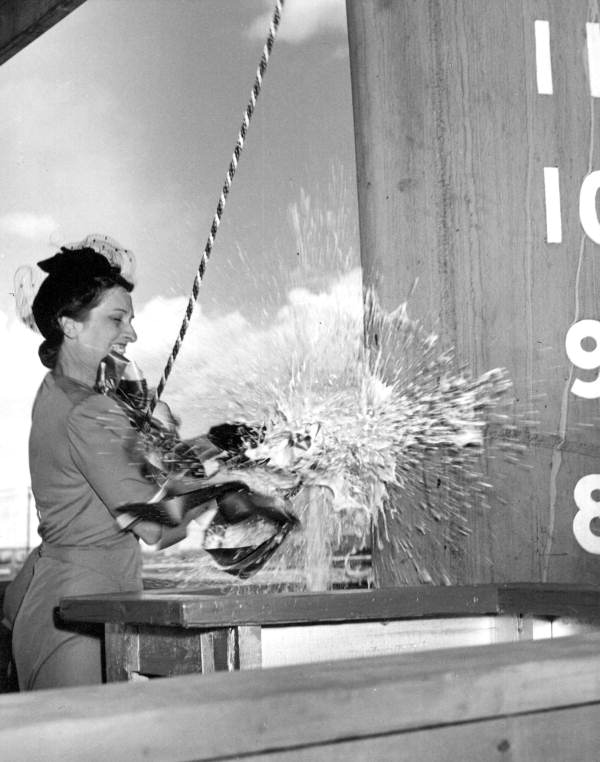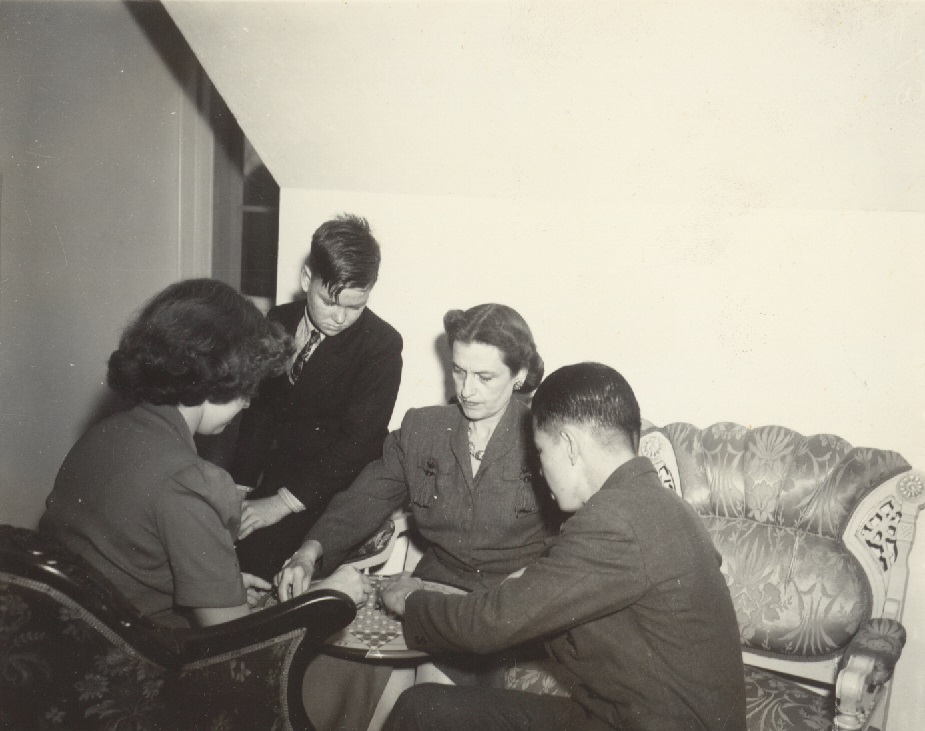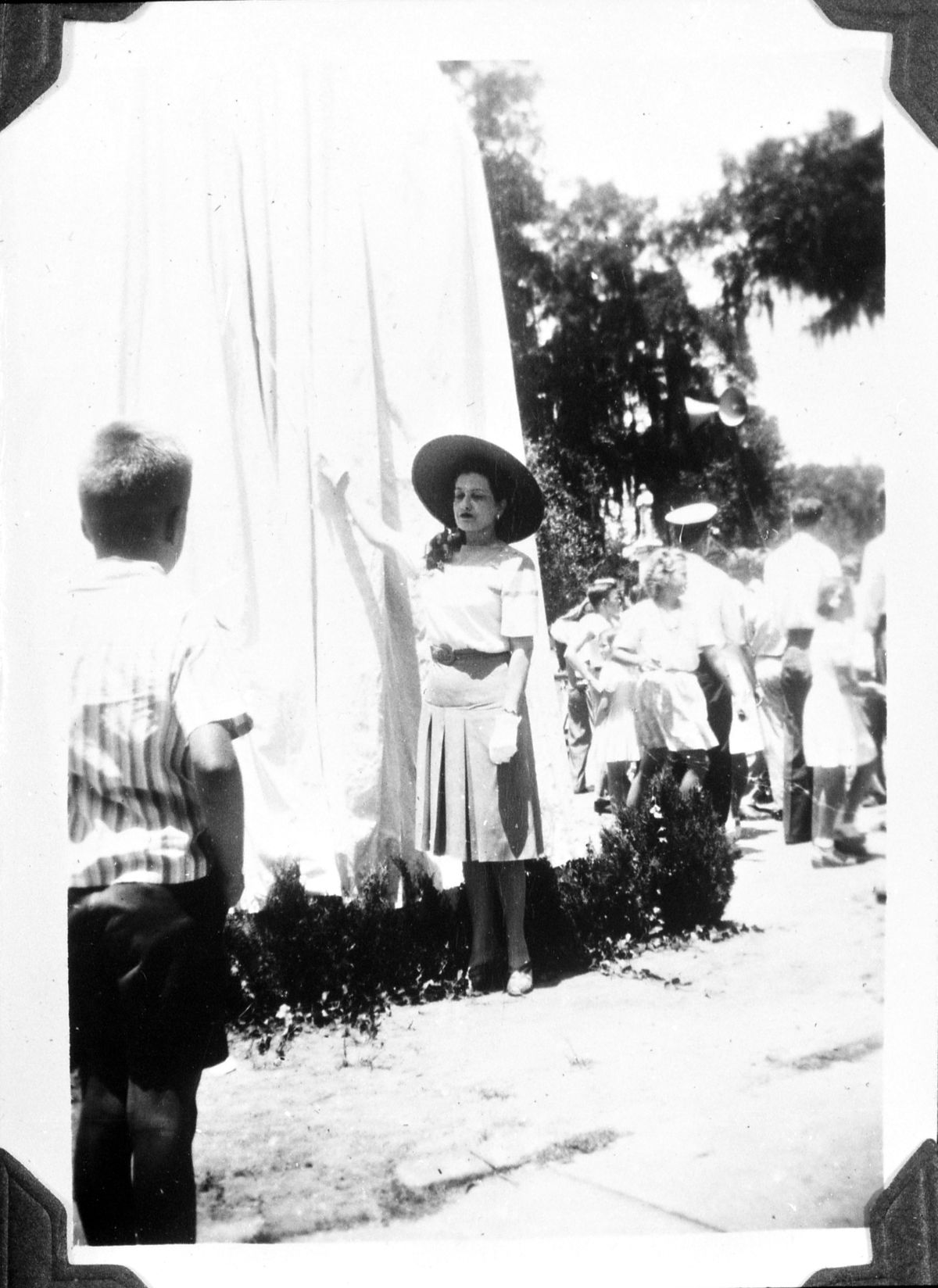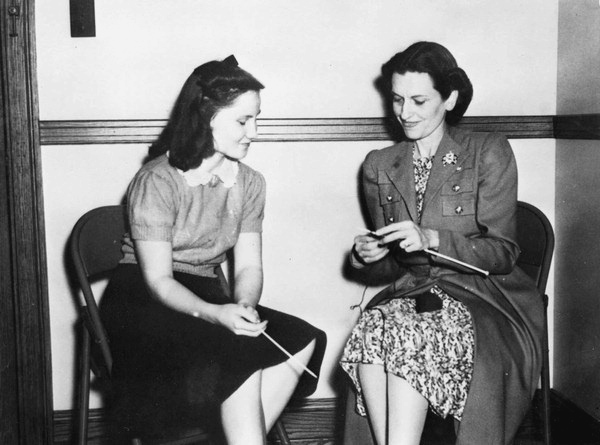Description of previous item
Description of next item
Florida's First Lady at War
Published June 6, 2018 by Florida Memory
World War II was an all-encompassing event for Floridians who lived through it. Between calls for military service, blackouts, food and fuel rationing, and the retooling of industries to feed supplies and equipment to soldiers on the front, no man, woman or child was left unaffected. That extended to Florida’s first family as well. Governor Spessard Lindsey Holland was only about a year into his administration when the U.S. entered World War II, and naturally it became a defining feature of his tenure as the state’s chief executive. But Governor Holland wasn’t the only member of his household who went all out to support the war effort. His wife, Mary Agnes Groover Holland, played a vital role as well.

First Lady Mary Groover Holland breaks a bottle of champagne against the hull of the USS Shasta, an ammunition ship built by the Tampa Shipbuilding Company (July 9, 1941).
Even before the United States officially entered the war, Mrs. Holland supported the Allies through humanitarian efforts such as the Bundles for Britain program. This arm of the British War Relief Society gathered donations of medical supplies, clothing, food and other essentials and sent them to Britain, which was at that time bearing the brunt of Hitler’s assault on Western Europe. In March 1941, Mrs. Holland visited the headquarters of the Bundles chapter at the Florida State College for Women to inspect the work being done there by the students and faculty. When she learned that some of the young women had not yet learned how to knit, she took a seat and put on a demonstration.
Once the United States was officially in the war and the federal government ramped up its efforts to mobilize the home front, Mary Holland used her position as Florida’s first lady to give civilian defense efforts a little extra publicity. When the State Defense Council organized drives to collect scrap metal for recycling into war materiel, she searched high and low in the Governor’s Mansion for items to contribute. She also hosted a very important delegation of Floridians connected with the scrapping effort – schoolchildren who had won a statewide contest to collect the most scrap metal. Six children were selected at the end of that contest to take part in the christening of a Liberty ship in Mobile named for Colin P. Kelly Jr. of Madison, who had been one of the first U.S. airmen to perish in combat after the attack on Pearl Harbor. While en route to Mobile, the children stopped off in Tallahassee and visited the Governor’s Mansion, where they had the opportunity to explore the governor’s desk and play Chinese checkers and darts with Mrs. Holland.

First Lady Mary Holland playing Chinese checkers with her house guests at the Governor’s Mansion in Tallahassee (December 1942). Seated around the table are Gwendolyn Willcocks, Allen Shelton, Mrs. Holland, and Albert W. Thompson (?).
Mrs. Holland’s efforts to recruit women for the Women’s Army Corps (WACs) were perhaps her most important contribution. In September 1943, Governor Holland appointed his wife chairman of the All-States WAC Recruiting Campaign for Florida, challenging her to enlist 1,000 women into the program. Mrs. Holland worked closely with the State Defense Council to appoint recruiters in each county and regularly attended WAC events to encourage the enlistees. “This is our war job – the task that we women can undertake in support of our fighting men,” she wrote in a letter to recruiters. “We cannot let them down.”

First Lady Mary Holland participates in the unveiling of a memorial to Colin P. Kelly Jr. in Madison (June 16, 1944).
Mary Holland’s contributions are just one example of the patriotic service to community and country that Florida women rendered during World War II. Check out our World War II in Florida exhibit, as well as the Florida World War II Heritage Trail, established by the Florida Department of State.
Cite This Article
Chicago Manual of Style
(17th Edition)Florida Memory. "Florida's First Lady at War." Floridiana, 2018. https://www.floridamemory.com/items/show/333284.
MLA
(9th Edition)Florida Memory. "Florida's First Lady at War." Floridiana, 2018, https://www.floridamemory.com/items/show/333284. Accessed December 30, 2025.
APA
(7th Edition)Florida Memory. (2018, June 6). Florida's First Lady at War. Floridiana. Retrieved from https://www.floridamemory.com/items/show/333284

 Listen: The Bluegrass & Old-Time Program
Listen: The Bluegrass & Old-Time Program